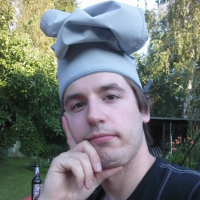Must pulley and idler sizes match?
-
@mrehorstdmd Mark, just for info, when the automotive industry changed from chain driven camshafts to belt driven ones it was found that having the tension too high would cause the belts to "whine" or "scream". It would be reasonable to assume the same would be true with our printers. So slackening the belts might make them quieter (although there are other reasons why one might not want to do that).
-
@mrehorstdmd wait but what's the theory behind the shrinkage? I would have thought it the opposite, that distance would stretch rather than shrink.
Also, what do u say as for using screws to hold bearings or idlers? The actual diameter of an M5 SCREW is not 5mm
-
@PassiveAggressor Let's say you are wrapping the tooth side of a belt around a 22 mm dia 608 bearing. Also assume the belt is 1.7 mm thick (a typical value). The outside diameter of the belt wrapped around the pulley is then 22 + 1.7 + 1.7 = 25.4 mm That means a complete wrap would have 25.4 * pi/ 2= 39.89 teeth touching the pulley. A 90 degree bend/wrap like you'd have for most corexy pulleys, would put 39.89/4= 9.97 teeth in contact with the pulley.
If you want to find the minimum pulley diameter that will have at least 9 teeth in contact with the pulley on a 90 degree bend/wrap, there will be 36 teeth in a full wrap. That's 36 x 2= 72mm circumference measuring the smooth side of the belt. That implies a belt + pulley diameter of 72/pi=22.9 mm. But the belt adds 3.4 mm to the diameter so the pulley diameter will be 22.9-3.4= 19.5mm
When you bend the belt toward the tooth side, the teeth get closer together. If you bend the belt the other way the teeth get farther apart.
The best thing to use to mount bearings is a shoulder bolt. They have accurately ground shaft diameters.
-
@mrehorstdmd thank you for replying. I think I get it but I gotta process it and visualise it. I guess I'm thinking about assuming the thickness of the belt is zero
-
@PassiveAggressor Just grab a piece of belt and try it:
Belt pitch is the spacing between teeth when the belt is straight.
-
@mrehorstdmd ah I see. In the midpoint of the belt there is no stretching. But because the belt has thickness on either side of it, teeth get closer and teeth get further I see now
-
@PassiveAggressor I had one of the links wrong- I fixed it.
-
It must be pointed out that when using "toothed" idlers if you install genuine High Quality Bearings E.G.
From the likes of F.A.G. or S.K.F then they last very well, but expect to pay a premium for quality bearings.
-
<<@deckingman said in Must pulley and idler sizes match?:
just for info, when the automotive industry changed from chain driven camshafts to belt driven ones it was found that having the tension too high would cause the belts to "whine" or "scream". It would be reasonable to assume the same would be true with our printers. So slackening the belts might make them quieter (although there are other reasons why one might not want to do that).Its funny you should mention this as one of my students presented his thesis on toothed belt tension (and the harmonics) using a high speed camera, a Belt Tension Meter RTM-400 and a high accuracy acoustic meter from Schmidt Control Instruments.
Watching the belts deflect at differing tensions and the resonant frequencies they produced was quite interesting
-
@PassiveAggressor If you assume the thickness of the belt is zero you will position pulleys incorrectly. You must include thickness of the belt when you're laying out a belt driven mechanism because the working segments of the belt have to be absolutely parallel to the guide rails (just as you would position lead screws parallel to the guide rails).
See: https://drmrehorst.blogspot.com/2018/08/corexy-mechanism-layout-and-belt.html
-
@mrehorstdmd yes I have read your blog some bit, useful stuff. I only regarded belt as zero thickness in relation to spacing of the teeth on the idler
-
@mrehorstdmd sorry one more question, why do toothed idlers and untoothed idlers have the same outer diameter? Shouldn't toothed idlers be slightly bigger in diameter because they have teeth that mesh the teeth?
-
@PassiveAggressor What you are asking is essentially the same question that is in this thread title and which the OP raised back in January 2019. Idlers come in a range of sizes and are available as toothed or un-toothed. As has been explained numerous times in the 4 years since this thread was started, idler sizes and pulley sizes do not have to match as long as the critical parts of the belt paths are parallel to the relevant axes.
-
Maybe it's time to lock the thread, feel like the subject has been answered full & well for several years IN this thread by now. But it still keeps getting bumped and pop up on the recent feed lol.
-
 undefined wilriker locked this topic
undefined wilriker locked this topic
-
 undefined wilriker locked this topic
undefined wilriker locked this topic